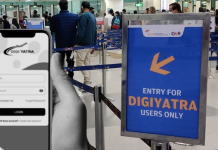
Do you know how much amount should be deposited in a savings account so that it does not come under the ambit of tax? In fact, to curb black money, the government has made it mandatory for banks, corporates, post offices and NBFCs to submit financial reporting. Let us know about it in detail.
In today’s time, every person needs a bank account. However, employed people or businessmen use more than one account. By the way, you can deposit any amount of money in the savings account. But do you know how much amount should be deposited in the savings account so that it does not come under the ambit of tax? In fact, the government has made it mandatory for banks, corporates, post offices and NBFCs to submit financial reporting to curb black money.
When the transaction amount in the account is high. Its scope includes depositing and withdrawing money, investing in share market, credit card bills, purchasing foreign currency and property transactions. According to income tax rules, the banking sector has to provide information about those accounts for 1 year to the tax department during the financial year.
In which there is regular deposit or withdrawal of ten lakh rupees or more. This limit is considered as a total of the amount deposited in one or more savings accounts of the customer. At the same time, if any transaction of Rs 10 lakh or more is done in the bank account in a financial year, the authorities should be informed.
In such a situation, if there are more transactions in someone’s savings account then he should remain alert. However, the limit in current account is more than Rs 50 lakh. Kapil Rana, founder of Hostbook Limited, says that people should be aware of Income Tax Rule 114E. So that there is no problem of any kind.
Now send money to any bank account sitting at home, know what is ‘Domestic Money Transfer’
You might have rarely thought about the facility of depositing cash sitting at home. But now this is going to be true. Now the Postal Department has started providing the facility of depositing cash in any bank account. Apart from the postman, cash can also be deposited by reaching the post office counter. After reaching your home, the postman will complete some processes through mobile and as soon as the cash reaches the hands of the postman, it will be credited to the account specified by you. For this, it is not necessary for the person sending the cash to have a bank account,
only a mobile number is mandatory. The Postal Department is already providing the facility of withdrawing cash from any bank account sitting at home through India Post Payments Bank through Aadhaar enabled payment system, but now the Postal Department has also started the facility of depositing cash sitting at home. Is. Under this ‘Domestic Money Transfer’
service, the customer will have to give cash by telling the recipient’s account number, IFSC code and his mobile number. If the postman immediately transfers the money from his mobile to the specified account, an OTP will be sent to the customer’s mobile. Which will have to be shared with the postman. As soon as the OTP is entered, the balance in the account will be credited and another confirmation message will be sent to the customer’s mobile.
The work will be done for just ten rupees
To avail the benefit of domestic money transfer service, a nominal fee has been kept, which will be a minimum of ₹ 10 or one percent of the deposited amount, whichever is higher. With this facility, people will not have to stand in queues in banks and it will be possible to deposit money in any person’s account. Women, senior citizens, disabled people, shopkeepers, migrant workers etc. will get a lot of convenience from this. Due to the wide network of the postal department reaching villages and remote areas, this facility will always be beneficial for the people.
Who can deposit how much money?
Some conditions are applicable for depositing money at home under Domestic Money Transfer service. Under which PAN card holders can deposit ₹ 25,000 at one time, ₹ 49,999 in a day and a maximum of Rs 1 lakh in a month in any bank account. A person without a PAN card can deposit cash up to Rs 5,000 at one time, Rs 25,000 in a day and a maximum of Rs 25,000 in a month in any bank account sitting at home. A minimum deposit of Rs 100 can be made under this service.
Reactivate your closed PPF account in these ways
Public Provident Fund (PPF) is considered one of the most popular investments across the country. An individual can invest up to Rs 1.50 lakh in a PPF account for a tenure of up to 15 years and get good interest rates in return. In compliance with the Central Government scheme, the PPF account offers guaranteed returns that are higher than the returns of other low-risk products.
A depositor has to deposit an amount of Rs 500 in a year to keep the account active. If the amount is not deposited by the due date the account becomes inactive. However, the account can be restarted by following some of the steps mentioned below. A Public Provident Fund (PPF) account becomes inactive when the account holder fails to deposit the minimum fee of Rs 500 in a financial year. Do this to reactivate your PPF account.
Submit written application
To restart a dormant PPF account, the account holder must submit a written request to the branch of the bank or post office where you opened the account. Applications can be made at any time during the 15 year tenure of the account.
Minimum deposit with penalty
In case the account becomes inoperative, the investor will have to deposit a minimum of Rs 500 for every financial year. Additionally, a penalty of Rs 50 will have to be paid for each financial year in which the account was inactive. The check has to be deposited in the bank branch along with the application.





